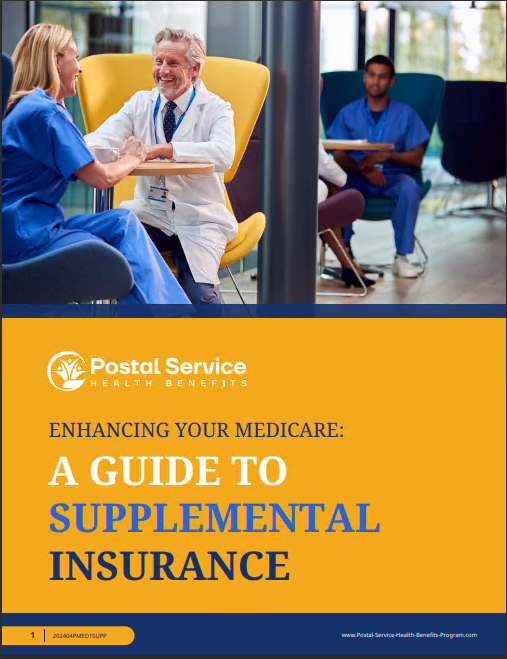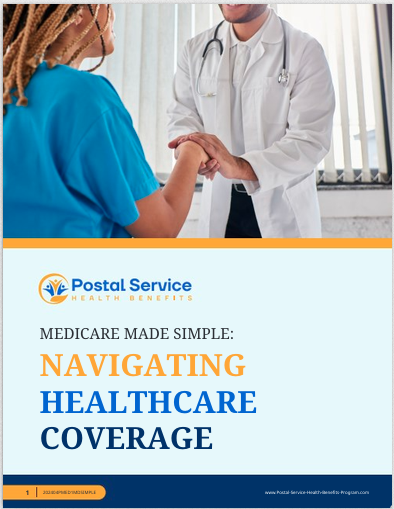Key Takeaways
- Major changes to the Postal Service Health Benefits (PSHB) program are coming in 2025, significantly affecting current and retired USPS employees.
- Understanding the new plan’s structure and benefits will help you make informed decisions about your health coverage.
Your Postal Service Health Benefits Are Getting a Makeover in 2025 — Here’s What You Need to Watch Out For
As 2025 approaches, the Postal Service Health Benefits (PSHB) program is undergoing a significant transformation. This change will impact both current USPS employees and retirees. If you’re part of the USPS community, it’s important to understand how these changes will affect your health coverage, and what actions you need to take to ensure you’re getting the benefits you need.
In this article, we’ll walk you through the most critical aspects of the upcoming changes, explain what you need to watch out for, and provide helpful tips for navigating this new landscape.
Why Is the PSHB Program Changing?
The new PSHB program comes as a result of the Postal Service Reform Act of 2022. This legislation aims to improve the financial stability of the USPS by addressing several long-standing issues, including the cost of healthcare benefits for postal workers and retirees. The current Federal Employees Health Benefits (FEHB) program will be replaced by PSHB, which is designed specifically for USPS employees and retirees.
While the new PSHB plan is similar to the FEHB program, there are some key differences that you need to be aware of. For one, the PSHB will require retirees to enroll in Medicare if they are eligible. This means that if you’re currently retired or nearing retirement, understanding how the PSHB program interacts with Medicare will be crucial for making the right decisions.
Key Changes You Need to Know
1. Mandatory Medicare Enrollment for Retirees
One of the most significant changes under the PSHB program is that retirees who are eligible for Medicare will be required to enroll in Medicare Parts A and B. This differs from the current FEHB program, where Medicare enrollment is optional. Retirees who do not enroll in Medicare may face penalties or lose some health coverage benefits under PSHB.
For retirees who are already on Medicare, this change may not have a significant impact. However, for those who have delayed Medicare enrollment, now is the time to plan ahead. Make sure to mark important Medicare enrollment dates on your calendar and review how your benefits will be affected.
2. Transition Period for Current Employees
For current USPS employees, the shift to the PSHB program in 2025 will likely require you to make some decisions about your health coverage. You will no longer have access to the FEHB program, so you’ll need to transition to the PSHB plan that best fits your needs.
The good news is that there will be a transition period leading up to the implementation of the PSHB program, giving employees time to review their options. During this period, it’s essential to attend any information sessions provided by the USPS or reach out to a licensed insurance agent to better understand your options. Staying informed during this time will help you avoid any potential gaps in coverage.
3. Similar Benefits with PSHB
The Postal Service Health Benefits program will offer benefits similar to those found in the FEHB program. This includes coverage for medical services, prescription drugs, and preventive care. However, it’s important to review the specific details of your new plan to ensure that it meets your health needs and preferences.
The structure of the PSHB program is tailored specifically for postal employees, which may lead to changes in provider networks, copayments, and other plan features. Be sure to review the benefits thoroughly before making any decisions.
4. Coordination with Medicare
For retirees, one of the most important aspects of the new PSHB program is how it coordinates with Medicare. Under the new plan, Medicare will serve as the primary payer for eligible retirees, while the PSHB plan will serve as secondary coverage. This coordination is designed to provide more comprehensive coverage while reducing out-of-pocket expenses for retirees.
To maximize your benefits, it’s crucial to understand how your PSHB plan will work with Medicare. Review your options carefully, and consider consulting a licensed insurance agent who can explain how your Medicare and PSHB coverage will work together to ensure you’re making the best choices for your health and financial well-being.
What to Do if You’re Retiring Soon
If you’re a USPS employee planning to retire in the next few years, the timing of the PSHB program’s implementation could significantly impact your healthcare decisions. Here are a few steps to consider:
-
Review Your Medicare Eligibility: If you’re nearing age 65 or are already eligible for Medicare, make sure you understand how the new PSHB program will affect your Medicare enrollment. Waiting too long to enroll could result in penalties or gaps in coverage.
-
Explore Your Health Plan Options: As the PSHB program is rolled out, make sure to review the available plans thoroughly. Pay attention to details like provider networks, prescription drug coverage, and out-of-pocket costs to ensure that you’re selecting a plan that meets your needs.
-
Stay Informed About Deadlines: Whether you’re already retired or planning to retire soon, make sure to keep track of important deadlines. Missing key enrollment windows could result in penalties or reduced benefits under the new program.
Important Deadlines to Watch Out For
The rollout of the PSHB program in 2025 will come with several important deadlines. Missing these deadlines could impact your ability to enroll in the program or result in penalties. Here are some key dates to keep an eye on:
-
Medicare Enrollment Periods: If you’re a retiree or approaching retirement, make sure to understand Medicare enrollment periods. You’ll want to enroll in Medicare Part A and Part B if you’re eligible, as failing to do so could result in higher costs or reduced benefits under the PSHB program.
-
PSHB Plan Enrollment Periods: As the new PSHB program is introduced, there will be specific periods during which you can enroll or make changes to your plan. Be sure to mark these dates on your calendar and review your options carefully during open enrollment.
How to Prepare for the Change
Whether you’re a current USPS employee or a retiree, preparation is key to navigating the upcoming changes. Here’s what you can do to get ready:
-
Stay Informed: Keep an eye out for official USPS communications about the PSHB program. This will ensure you’re getting the most accurate and up-to-date information.
-
Evaluate Your Current Health Needs: Assess your current healthcare needs and any upcoming changes. For instance, if you have any ongoing medical conditions, make sure the PSHB plan you choose offers the coverage and provider network you require.
-
Seek Professional Guidance: Licensed insurance agents are available to help you navigate the changes and understand your options. Reaching out to a professional can provide peace of mind as you make these critical decisions about your health coverage.
USPS Employees and Retirees: What You Should Watch Out for During the Transition
As you prepare for the shift to the Postal Service Health Benefits program, there are a few potential pitfalls to be aware of:
-
Missed Deadlines: Missing important enrollment deadlines could result in coverage gaps or penalties, especially for retirees who need to enroll in Medicare.
-
Provider Network Changes: The new PSHB plans may have different provider networks than your current FEHB plan. Make sure to verify that your preferred doctors and hospitals are included in the network before enrolling in a new plan.
-
Understanding Coverage Changes: Although the PSHB program will offer similar benefits to the FEHB program, there could be changes in coverage for certain services, prescription drugs, or out-of-pocket costs. Take the time to read the plan details carefully.
Final Thoughts on the Upcoming PSHB Changes
The upcoming changes to the Postal Service Health Benefits program will impact all USPS employees and retirees. Whether you’re still working or already retired, it’s essential to stay informed, understand the key changes, and take proactive steps to ensure your health coverage needs are met.
By planning ahead, staying informed about deadlines, and seeking professional guidance when necessary, you can make the transition to the PSHB program as smooth as possible and continue enjoying the health benefits you’ve earned through your service.






